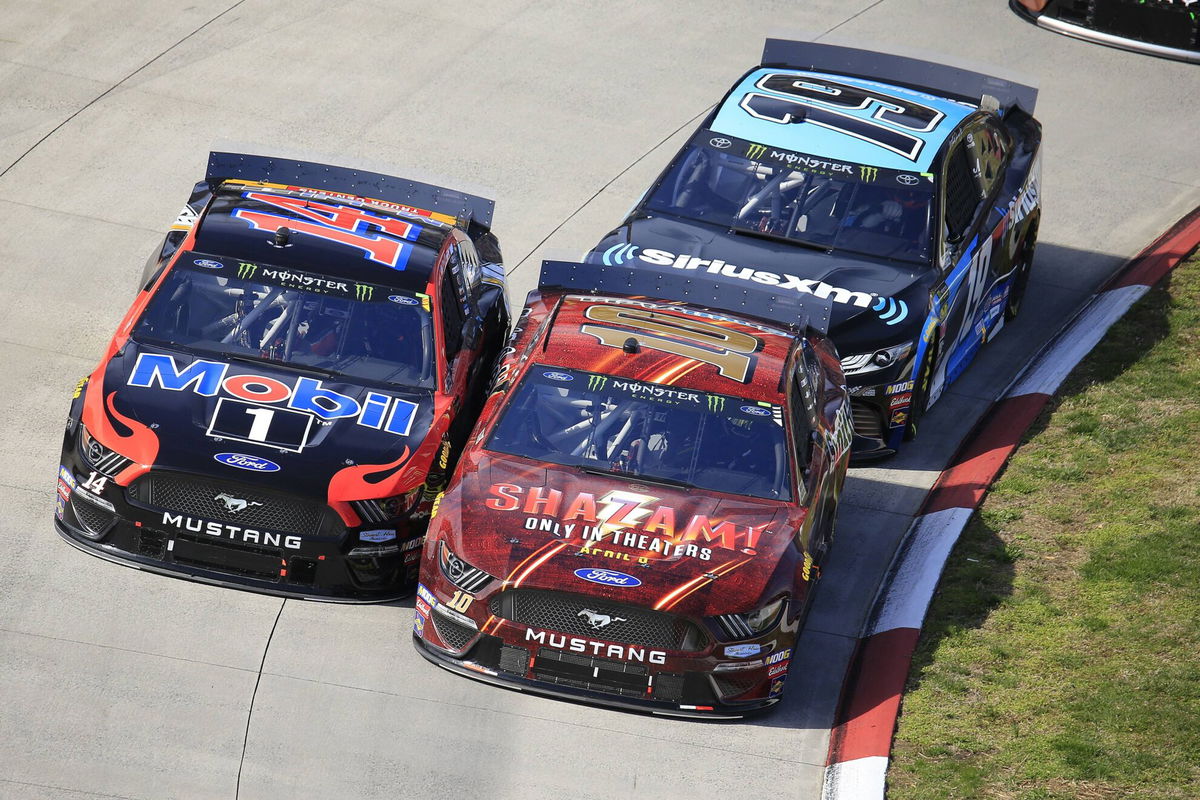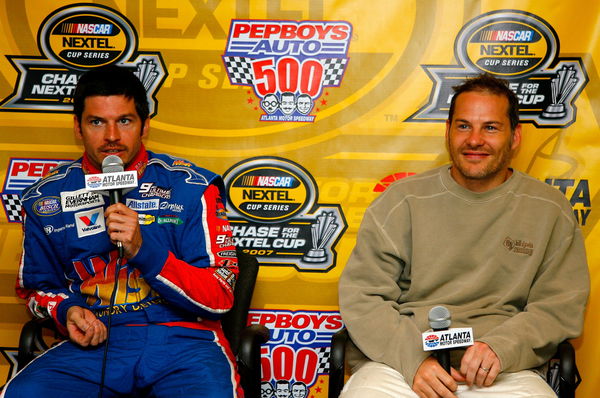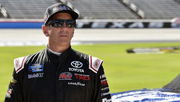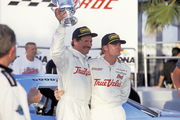
Imago
MARTINSVILLE, VA – MARCH 24: 10: Aric Almirola, SHR, Ford Mustang SHAZAM! / Smithfield battles 14: Clint Bowyer, SHR, Ford Mustang Mobil 1 / Rush Truck Centers during the 70th Annual running of the STP 500 Monster Energy NASCAR Motorsport USA Cup Series race on March 24, 2019 at Martinsville Speedway in Martinsville, VA. (Photo by David J. Griffin/Icon Sportswire) AUTO: MAR 24 Monster Energy NASCAR Cup Series – STP 500 PUBLICATIONxINxGERxSUIxAUTxHUNxRUSxSWExNORxDENxONLY Icon9531903240535500

Imago
MARTINSVILLE, VA – MARCH 24: 10: Aric Almirola, SHR, Ford Mustang SHAZAM! / Smithfield battles 14: Clint Bowyer, SHR, Ford Mustang Mobil 1 / Rush Truck Centers during the 70th Annual running of the STP 500 Monster Energy NASCAR Motorsport USA Cup Series race on March 24, 2019 at Martinsville Speedway in Martinsville, VA. (Photo by David J. Griffin/Icon Sportswire) AUTO: MAR 24 Monster Energy NASCAR Cup Series – STP 500 PUBLICATIONxINxGERxSUIxAUTxHUNxRUSxSWExNORxDENxONLY Icon9531903240535500
The year 2007 was popular because of the Spygate controversies across major sporting series and leagues. At the Formula 1 level, Ferrari and McLaren were involved in a lawsuit. Ferrari claimed that its former employee stole technical data and sold it to different teams. With the FIA’s intervention, Ferrari’s allegation proved to be true and resulted in the biggest fine of $100 million.
Watch What’s Trending Now!
Meanwhile, in the United States, the NFL was dealing with a similar incident where the New England Patriots were caught videotaping opposition coaches. Well, NASCAR isn’t new to controversies and scandals, and the Bill Davis Racing story is certainly one that fits the bill if there was a Spygate controversy in NASCAR.
ADVERTISEMENT
Here’s how Bill Davis Racing engineered their own downfall
Like any motorsports series, NASCAR teams cannot operate without a strong OEM partner. Back in the 90s, motorsports enthusiasts like Bill Davis were looking to enter the sport. Having made a fortune from his rental truck services company, Davis rolled into NASCAR with big ambitions and aspirations. Well, he was indeed serious about his project as he signed the likes of Mark Martin and Jeff Gordon.
By this time, Davis was hoping to enter Cup racing with Gordon, but Rick Hendrick lured the young gun and BDR opted for Bobby Labonte to lead their racing program. But, despite switching to Pontiac, they weren’t able to get the desired results and partied ways with Labonte after 1994. This is where Ward Burton entered the scene and became their anchor driver. Although the team bagged its first win at Carolina Motor Speedway, they weren’t nowhere to be seen as far as championship race was concerned.
This is where Toyota enters the picture with the dreams of going against the top dogs of the sport. But there was one issue. The #22 team had seen a lot of success with their partnership with Dodge as they won crown jewel races like the Daytona 500 and Southern 500. Bill Davis was an independent owner and was always on the lookout for a better deal, regardless of his relationship with a manufacturer. This was quite evident from the switches he made to the #22 team, and they had now set eyes on a dream collaboration with Toyota.
ADVERTISEMENT
Despite being linked to the Dodge program, BDR joined hands with Toyota in the Craftsman Truck Series. Dodge was the one who provided the team with all the resources needed to run a race team. Right from wind tunnel to a race shop. Without enough time on their hands, Toyota needed to develop a body and engine for approval. Now, Bill Davis Racing, who saw nothing but dollar signs, welcomed Toyota with open arms and took charge of the wind tunnel test. And this is where they made a mistake that ultimately sank the race team.

Getty
HAMPTON, GA – OCTOBER 30: Patrick Carpentier, driver of the #10 Valvoline Dodge and Jacques Villenueve, driver of the #27 Bill Davis Racing Toyota speak with the media during NASCAR testing at Atlanta Motor Speedway on October 30, 2007 in Hampton, Georgia. (Photo by Rusty Jarrett/Getty Images for NASCAR)
A prototype Tundra used a Dodge engine during the test, and this led to a big controversy. Toyota’s arrival at the Cup level was only a matter of time, and through these test results, they would’ve been able to tap into the team data and information that could provide a head start for the newcomer. Daimler Chrysler, the parent company for Dodge, filed a lawsuit against Bill Davis Racing for building trucks for Toyota’s entry to the Truck Series in 2004. And just like that, Dodge also pulled the plug on their partnership with the team in the Cup Series. The team did run the Dodge car until 2006 but without the factory support, and by the time 2007 came around, the dynamics of their relationship with Toyota changed.
ADVERTISEMENT
The lawsuit with Dodge got settled by 2006, where Davis had to pay Chrysler $6.5 million. BDR wanted to be a flagship team for the new OEM, but the team was not the first preference for the Japanese carmaker. Michael Waltrip Racing and Red Bull Racing leapfrogged BDR and Joe Gibbs Racing‘s arrival in 2008, ultimately foiling their plans to become a flagship team.
Losing out on their primary sponsor, Caterpillar, and suffering financial losses with the lawsuit, BDR just couldn’t survive in the end. Bill Davis sold off the team to Triad Racing Technologies in 2008, and this is how Bill Davis Racing’s NASCAR chapter came to an end. This wasn’t the first instance where teams were embroiled in the theft of confidential information. But, JGR was right in the middle of such controversy this year.
ADVERTISEMENT
Top Stories
Horrific Aerial Footage of Greg Biffle’s Fatal Crash Emerges Leaving NASCAR Community in Tears

Footage Surfaces of Florida Police Arresting NASCAR Veteran Over Disturbing Public Misbehavior

Kenny Wallace Reacts to Brad Keselowski’s Shocking Injury With Unusual Moment of Gratitude

Another Almost Fatal Disaster Surfaces From Statesville Airport Amidst Ongoing Greg Biffle’s Crash Investigation

When NASCAR Didn’t Wait: Dale Earnhardt’s Injury Comeback Came With the Hot Seat of Zero Sympathy

JGR team engineer played the role of a double agent per NASCAR
Earlier in the year, NASCAR acknowledged that they had information about an engineer from a team who shared data with a rival camp. The sanctioning body didn’t intervene, as there were no formal complaints from any teams. However, it was known that Joe Gibbs Racing was the team involved in this controversy.
The engineer was in his final year of contract with JGR and was eyeing making a switch next year. While the name of the other team was kept a secret, there was one clue that they had no cars in the playoffs. Furthermore, they lured the JGR engineer to share the information and data on race setups in exchange for cash.
ADVERTISEMENT
Jenna Fryer from the Associated Press shared the details of the scandal. “The engineer is in a contract year with Joe Gibbs Racing, according to executives with six teams who spoke with the AP on condition of anonymity because the details are considered private and have not been disclosed publicly.” Without the complaints or the lawsuit, it is possible that the two teams involved dealt with the issue behind closed doors. And NASCAR certainly didn’t want a new controversy to deal with while executing its big plan for the 2025 season.
ADVERTISEMENT
ADVERTISEMENT
ADVERTISEMENT

